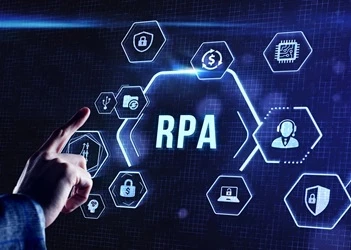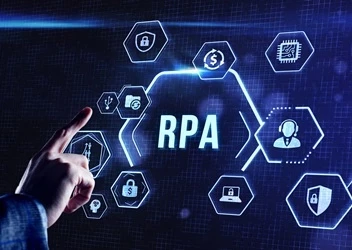How to revolutionize risk management with RPA
3 reasons why you should be using robotic process automation (RPA) to fortify risk management processes
Add bookmark
During the late 19th Century, the Pony Express revolutionized the delivery of business communications by transporting mail between Missouri and California in as little as ten days, a full two weeks faster than any alternative method. Contracts, commissions and correspondence could be in the hands of business partners across the country and returned, complete, before a month had passed. While telegraphs and—soon—telephones could exchange messages almost instantly, it would be decades before there was a faster way to get paperwork from one office to another across the country.
It seems quaint now, in the age of digital signatures and email attachments. Technology has accelerated and business has kept pace, shifting to embrace new ways of working that reduce timeframes and shrink distances. We wouldn’t dream of giving a contract to a colleague on horseback in the hope of seeing it back, signed, in a few weeks. Yet the ongoing development of exciting technologies easily slips past and we risk missing opportunities to make similarly groundbreaking changes to the ways we work.
According to Deloitte’s Global Risk Management Survey in 2020, less than a third of those surveyed used robotic process automation (RPA) in their risk management, even though almost three-quarters wanted to. With the explosion of machine learning, adaptive artificial intelligence, and large language models in the last year, now is the time to look at how intelligent process management tools like RPA can revolutionize your organization’s risk management.
RPA increases precision
One of the greatest benefits of RPA technologies is its reliability. Bots do not have bad days, they do not lose concentration or get distracted, and they do not need regular caffeine infusions to keep focused. Automated process workflows just work, and they do so consistently and tirelessly. This means risk management processes have less gaps, breakdowns or delays as data transcription and transmission is conducted instantly and perfectly, every time.
Gain clarity into risk management processes
When RPA and intelligent process tools are tied to risk management, the entire system can gain greater visibility. One of the great challenges of risk management is making people aware of the risks, controls and associated responsibilities that they should be engaged with. Risk registers too often languish in SharePoint drives or spreadsheets rather than being top-of-mind for operational staff. RPA tools can change that by alerting stakeholders to changes in processes, or making them aware of action points as they occur, in real time. Instant alerts and digital notifications accelerate compliance and ensure controls are actually being enacted in a timely fashion.
Demystify risk management
Risk management relies on keeping a finger on the pulse of your business and industry. Risks evolve and change, and identifying those potential dangers is a significant part of the risk management process. AI and RPA tools are capable of consuming massive amounts of data, monitoring business activities as they happen, identifying patterns or unusual activities that could point to potential risks, and alerting stakeholders to the vulnerabilities before they become any more significant. In financial industries or businesses with high compliance requirements, RPA can provide an effective vanguard for risk management awareness.
Business technology has come a long way since the Pony Express, and it continues to develop at an incredible pace. Now is the time to take advantage of how it can improve your business processes, and start to make the most of process automation tools for risk management in your business.



















